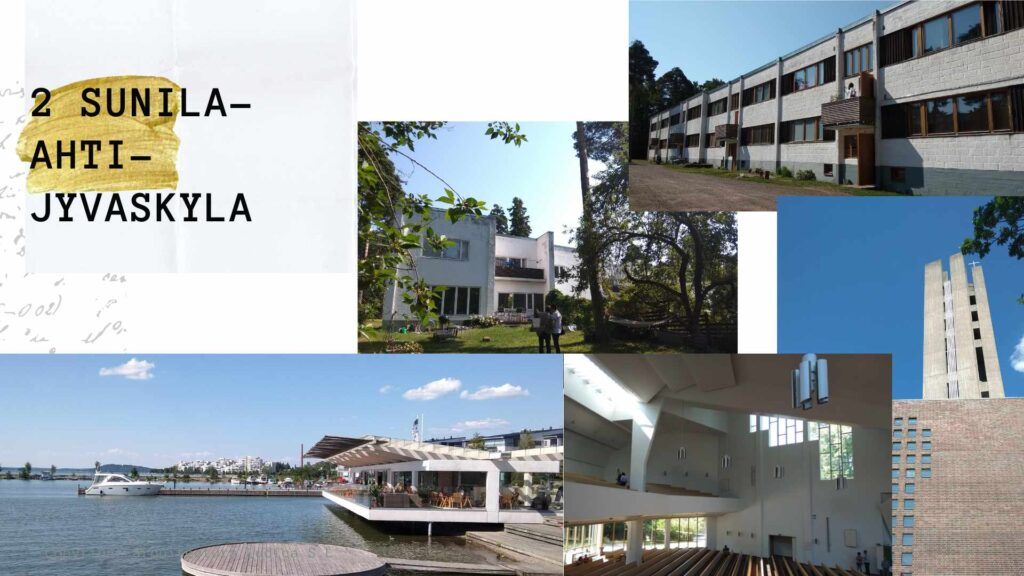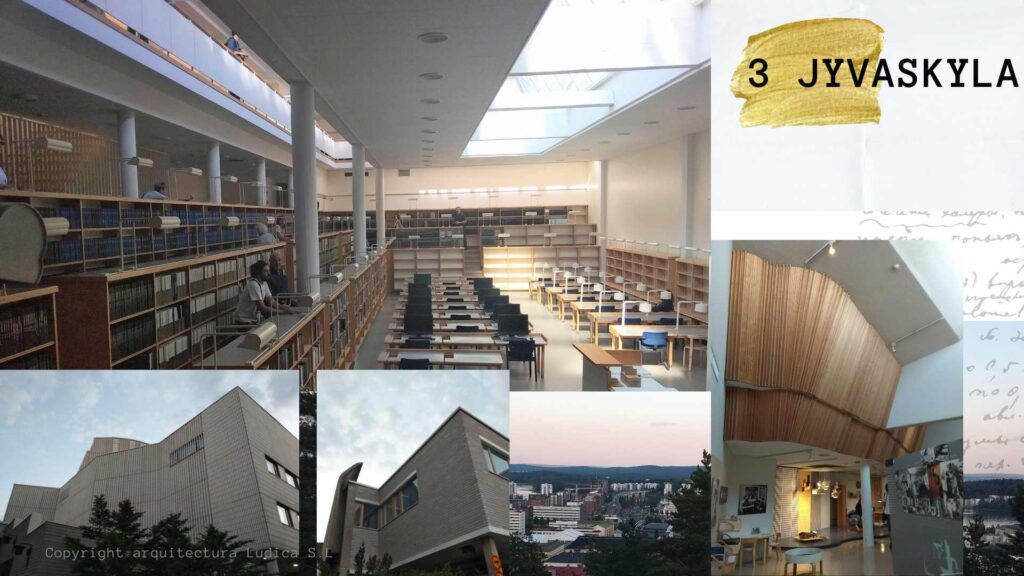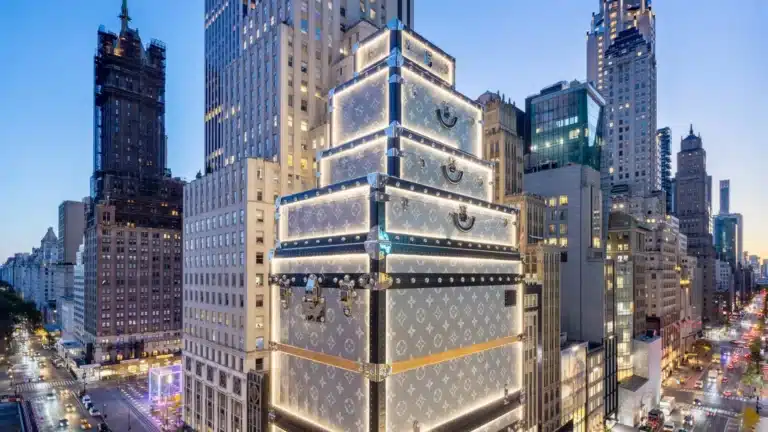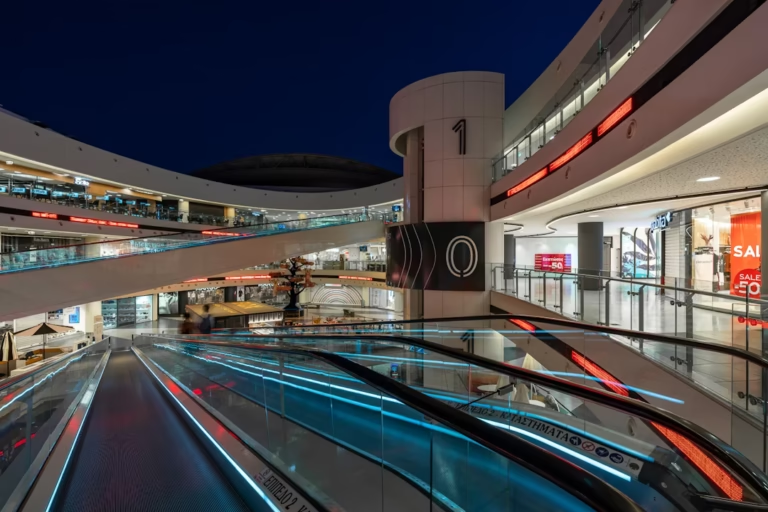Finland, known for its refined approach to modernism and nature-integrated architecture, offers a unique opportunity to study the built legacy of Alvar Aalto, one of the 20th century’s most influential architects. A recent architectural journey across the country sheds light on Aalto’s contributions as well as other Finnish architectural landmarks.
Helsinki: Urban Layers and Aalto’s Early Work
The trip begins in Helsinki, where a walking tour highlights several of Aalto’s early and mid-century designs. Among the notable sites are Finlandia Hall and the Rautatalo commercial building. These works reveal Aalto’s distinct ability to merge form, material, and human scale into public architecture. The tour also explores the academic bookstore and Nordic Bank offices, showcasing Aalto’s diverse typological range.


From Sunila to Lahti: Industrial Modernism and Sacred Spaces
As the group moves east toward Sunila, Aalto’s approach to industrial housing in the Karhula district demonstrates his commitment to social design. The visit includes his own residence and studio, allowing insight into his personal spatial philosophy. In Lahti, the Church of the Cross (Ristinkirkko) stands in contrast—quietly monumental and filled with light. The visit also includes a glimpse of Saarinen’s Town Hall and Sibelius Hall, underlining the Finnish balance of tradition and innovation.
Jyväskylä: Aalto’s Architectural Laboratory
Jyväskylä, often referred to as Aalto’s “architectural hometown,” hosts numerous examples of his institutional and residential works. Tours include the Workers’ Club, University buildings, Police Headquarters, and more. Walking and bus tours extend into the suburbs to examine lesser-known housing projects like Villa Karpio and Viitatorni Apartments. The city offers a concentrated view of Aalto’s evolving style across decades.
More on ArchUp:
Sääksalo and Muuratsalo: Experimental and Civic Architecture
The journey continues to Aalto’s experimental house on Muuratsalo Island—a structure that blurs boundaries between home and testing ground. Nearby, the Town Hall of Säynätsalo reflects a blend of rustic intimacy and democratic form. Stops in Muurame and Alajärvi include ecclesiastical and civic buildings, revealing Aalto’s grasp of both sacred and administrative functions.
Seinäjoki and Villa Mairea: Monumentality and Intimacy
In Seinäjoki, visitors encounter a rare unified civic center designed entirely by Aalto—comprising a church, library, and administrative buildings. The town is an example of comprehensive architectural vision. Further west in Noormarkku lies Villa Mairea, a private residence where Aalto masterfully balances artistic freedom with functional elegance.


Turku to Paimio: Functionalism and Media Spaces
Turku offers glimpses of Aalto’s early functionalist architecture, including newspaper offices and apartment buildings. The JKMM-designed Turku library reflects Finland’s contemporary architectural language. En route to Helsinki, a stop at the Paimio Sanatorium illustrates Aalto’s deep concern for human well-being through design, especially in healthcare environments.
Espoo and Otaniemi: Educational Design and Urban Planning
The tour continues in Espoo’s Otaniemi district, home to the Aalto-designed University of Technology campus. This segment of the trip underscores Aalto’s influence in shaping educational environments—from libraries to sports halls. The campus layout and architecture offer lessons in spatial hierarchy and community cohesion.



Final Stops: Munkkiniemi and the Soul of Helsinki
The final day includes visits to Aalto’s own house and studio in Munkkiniemi, offering personal insight into his architectural thought process. The itinerary rounds off with a walking tour through Helsinki’s Neoclassical center and ends at the Kiasma Museum of Contemporary Art, designed by Steven Holl. This juxtaposition of eras—classic and contemporary—highlights Finland’s layered architectural heritage.
Reflection: Architecture in Dialogue with Nature and Society
This immersive journey across Finland affirms Alvar Aalto’s unique contribution to modern architecture. His buildings—whether institutional, residential, or spiritual—embody a profound respect for context, human experience, and material expression. Combined with works by other Finnish architects, the trip reveals a national architectural narrative grounded in restraint, sensitivity, and innovation.






